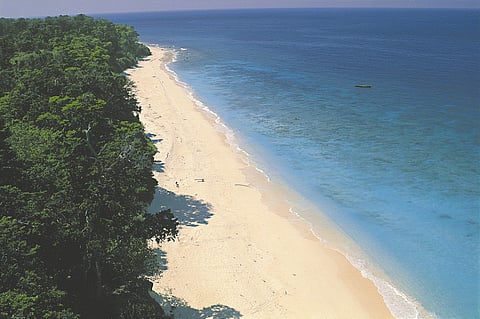

Pankaj Sekhsaria and the Andaman Islands go way back, as far as 25 years. This Associate Professor at IIT Bombay went there when he was an Engineering student himself. And then again in the 1990s, courtesy a research project for Kalpavriksh Environmental Action Group, which he continues to be a passionate member of. And soon, photography, journalism — he no longer needed a reason to go to the island, he had already established an indelible relationship with it. His first book for children, after writing abundantly for adults, is also centered around the island itself. And it draws from a beautiful anecdote that the professor experienced.
Waiting for Turtles, which was released on July 31, 2021, is a sweet story of Samrat and his researcher-mother Seema eagerly waiting to spot the elusive green sea turtle, one of the largest sea turtles known to mankind. "These turtles are known to nest in the Andaman and Nicobar Islands and this story is based on a personal experience from about 20 years ago that I tried to fictionalise," says the Associate Professor, Centre for Technology Alternatives for Rural Areas (CTARA) and Associate Faculty, Centre for Policy Studies (CPS), IIT Bombay. Though Samrat is mighty disappointed for failing to catch a sight of the herbivore turtle, he is visited by it in the most unusual way. "I already had a visual sense of the place, which I have visited several times. Apart from the story and the scientific facts weaved into it, there is so much for the children to absorb visually. That's why the book spent a year and a half in production, the illustrator Vipin Sketchplore has done a splendid job with it," shares the professor. Since the professor knows the place intimately, everything right down to the shade of the sand was paid attention to.
One of the most beautiful parts of the story is centered around Seema informing Samrat about how the beach might look like a desolate place, but there are always traces of activities that one can spot. The tiny holes left behind by ghost crabs, trails of sea snakes or even the very distinct 'three sharp marks running ahead in a line' on the beach of the thick-knee bird — at Tarmugli Islands where this story is unfolding, is always a flurry of activity. "There is a tendency to talk down to children in books, but we know we had an interesting story to tell and the point was just to communicate it to children," says the professor who was a PhD candidate at Maastricht University, The Netherlands.
What helps the child's reading journey is the detailed yet succinct note on the environmental troubles of these turtles and their residence, the Andaman and Nicobar Islands followed by a map to make it easy for children to locate the islands. Hence, this book, published by Karadi Tales, is the professor's humble attempt to convey a real-time experience and layer it with scientific facts which will help the children gain greater understanding of the pristine islands which are under great threat. Now that the book is out in English and Hindi, the Telugu translation is to be out in a few months' time too. He is also working on profiles of the other interesting creatures found on the island written as rhyming poems of 12-15 lines each and hopes to publish it soon.
The professor has previously written Islands in Flux: The Andaman and Nicobar Story (2019), The Last Wave - An Island Novel (2014) and continues to write for prominent newspapers online as well, what he has been writing extensively about lately is NITI Aayog's development plans for the islands. "It's unfortunate, but there is no way out other than not to go ahead with it. Because these are huge thousands of crores of rupees being poured into fragile and unique landscapes with no reasonable cost-benefit analysis. We forget that not more than 100 nautical miles from the islands is where the 2004 tsunami originated, these are geologically sensitive areas where earthquakes keep occurring regularly," he emphasises. He also says that the projects are coming up in prominent turtle nesting sites of turtles.
